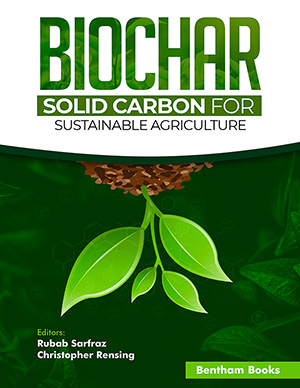
Abstract
In general, a cancerous process starts from uncontrolled cell growth, apoptosis, and rapid proliferation of cellular clones, as well as, reactive oxygen species (ROS) and imbalance of ROS-antioxidant production also could be involved in the genesis of the disease. Cancer has accounted for millions of deaths worldwide every year, representing a relevant threat to human lives. In this context, malignant melanoma represents the most aggressive and deadliest type of cancer, leading to increased rates of patient deaths. Natural active compounds have demonstrated their pharmacological benefits in several different studies. Among these compounds, coumarin analogs have demonstrated promising biological profiles, considering their efficacy and low toxicity. In this context, this phytochemical oxygenated core has been broadly investigated since it presents several biological properties of interest in the medicinal field. Herein, we reported a complete compilation of studies focused on natural coumarins against melanoma, as well as, tyrosinase since it is a cooper-catalyzed oxidase that performs an essential role during melanogenesis (Eu-melanins and Pheo-melanins), which is associated with melanoma. Thus, three different subclasses of natural coumarin were described in detail, such as simple coumarin core, furanocoumarins, pyranocoumarins, and pyrone-substituents. Additionally, insights on tyrosinase have been provided, allowing an overview of some structural/- functional aspects of its enzyme, such as the presence of a binuclear type 3 cooper coordination at the binding site of this target, acting as cofactors. Posteriorly, several coumarin- based analogs with anti-tyrosinase activity also were reported and discussed. Finally, we believe that unprecedented review can be a valuable source of information, which can be used to design and develop novel coumarin-based analogs targeting melanoma and also tyrosinase enzyme, contributing to the advances in the field of natural products.
Keywords: Coumarin, tyrosine, nature-based analogs, melanoma, cancer, drug design.
[http://dx.doi.org/10.2174/138920008785821657] [PMID: 18781909]
[http://dx.doi.org/10.1016/j.bmc.2019.115145] [PMID: 31648874]
[http://dx.doi.org/10.1016/j.ijbiomac.2022.09.055] [PMID: 36089081]
[http://dx.doi.org/10.1016/j.cbi.2015.02.011] [PMID: 25724286]
[http://dx.doi.org/10.1016/j.hermed.2022.100575]
[http://dx.doi.org/10.5530/ax.2011.4.2]
[http://dx.doi.org/10.1136/jcp.54.3.176] [PMID: 11253127]
[http://dx.doi.org/10.1016/j.cellsig.2007.04.009] [PMID: 17570640]
[http://dx.doi.org/10.1152/physrev.00029.2006] [PMID: 17237348]
[http://dx.doi.org/10.1023/B:MCBI.0000049134.69131.89] [PMID: 15646026]
[http://dx.doi.org/10.1042/BST0351147] [PMID: 17956298]
[http://dx.doi.org/10.1016/j.ccr.2021.214307]
[http://dx.doi.org/10.1016/j.jinorgbio.2022.111820] [PMID: 35421766]
[http://dx.doi.org/10.1155/2017/7952417] [PMID: 28491112]
[http://dx.doi.org/10.1016/j.eujim.2021.102083]
[http://dx.doi.org/10.1016/j.phymed.2018.06.008] [PMID: 30097108]
[http://dx.doi.org/10.2174/1871520617666171121142522] [PMID: 29173184]
[http://dx.doi.org/10.1016/j.phymed.2010.03.011] [PMID: 20729047]
[http://dx.doi.org/10.2174/092986711803414395] [PMID: 21824098]
[http://dx.doi.org/10.2174/1871520616666160902094739] [PMID: 27592545]
[PMID: 22876957]
[http://dx.doi.org/10.1016/j.bioorg.2016.09.006] [PMID: 27669119]
[http://dx.doi.org/10.3389/fonc.2020.592853] [PMID: 33344242]
[http://dx.doi.org/10.1016/j.ejphar.2020.173207] [PMID: 32446712]
[http://dx.doi.org/10.1016/j.ejmech.2012.12.004] [PMID: 23291120]
[http://dx.doi.org/10.1016/j.cbi.2018.05.010] [PMID: 29803612]
[http://dx.doi.org/10.1054/bjom.2000.0459] [PMID: 11178853]
[http://dx.doi.org/10.1002/pros.2990170203] [PMID: 2399194]
[http://dx.doi.org/10.1016/j.bioorg.2020.103818] [PMID: 32276135]
[http://dx.doi.org/10.1016/j.bmcl.2012.12.071] [PMID: 23642480]
[http://dx.doi.org/10.1016/j.ejphar.2008.11.020] [PMID: 19041861]
[http://dx.doi.org/10.1016/j.molstruc.2021.132173]
[http://dx.doi.org/10.1016/j.bmcl.2018.10.046] [PMID: 30396758]
[http://dx.doi.org/10.1038/nature05661] [PMID: 17314971]
[http://dx.doi.org/10.1016/j.addr.2017.09.016] [PMID: 28939379]
[http://dx.doi.org/10.1016/S0140-6736(18)31559-9] [PMID: 30238891]
[http://dx.doi.org/10.1016/j.jconrel.2022.07.035] [PMID: 35908622]
[http://dx.doi.org/10.1016/j.jid.2020.03.943] [PMID: 32268150]
[http://dx.doi.org/10.2147/ITT.S134842] [PMID: 29922629]
[http://dx.doi.org/10.1080/15384047.2019.1640032] [PMID: 31366280]
[http://dx.doi.org/10.1016/S0140-6736(21)01206-X] [PMID: 34509219]
[http://dx.doi.org/10.1007/s00432-018-2726-1] [PMID: 30094536]
[http://dx.doi.org/10.1016/j.bbagen.2020.129736] [PMID: 32956754]
[http://dx.doi.org/10.1016/j.bbcan.2019.02.002] [PMID: 30776401]
[http://dx.doi.org/10.1016/j.semcancer.2019.06.011] [PMID: 31233829]
[http://dx.doi.org/10.1016/j.phytochem.2022.113154] [PMID: 35245525]
[http://dx.doi.org/10.3390/plants10010123] [PMID: 33435579]
[http://dx.doi.org/10.1080/01635580903191585] [PMID: 20043255]
[http://dx.doi.org/10.1155/2013/963248] [PMID: 23586066]
[http://dx.doi.org/10.1016/j.canlet.2004.04.022] [PMID: 15331172]
[http://dx.doi.org/10.3109/03602539008991449] [PMID: 2078993]
[PMID: 21737617]
[http://dx.doi.org/10.1016/S0304-3835(03)00333-1] [PMID: 12957356]
[http://dx.doi.org/10.1097/00008390-199906000-00005] [PMID: 10465579]
[http://dx.doi.org/10.3390/cancers12071959] [PMID: 32707666]
[http://dx.doi.org/10.1016/B978-0-12-803797-3.00001-1]
[http://dx.doi.org/10.15430/JCP.2015.20.2.106] [PMID: 26151043]
[http://dx.doi.org/10.1016/j.phymed.2007.04.001] [PMID: 17689942]
[http://dx.doi.org/10.1016/j.jphotobiol.2004.07.004] [PMID: 15488715]
[http://dx.doi.org/10.1002/ptr.2043] [PMID: 17143927]
[http://dx.doi.org/10.1007/s11418-013-0774-z] [PMID: 23649674]
[http://dx.doi.org/10.1016/j.jep.2019.112517] [PMID: 31931162]
[http://dx.doi.org/10.1016/j.bmc.2017.09.021] [PMID: 29042224]
[http://dx.doi.org/10.1016/j.ejmech.2018.04.051] [PMID: 29730190]
[http://dx.doi.org/10.1016/j.molstruc.2021.130951]
[http://dx.doi.org/10.1016/j.biochi.2010.11.014] [PMID: 21144881]
[http://dx.doi.org/10.1016/j.phytochem.2006.08.006] [PMID: 16973188]
[http://dx.doi.org/10.1091/mbc.e05-07-0626] [PMID: 16162817]
[http://dx.doi.org/10.1016/0888-7543(88)90153-X] [PMID: 3146546]
[http://dx.doi.org/10.1016/j.ejmech.2019.111765] [PMID: 31629163]
[http://dx.doi.org/10.1042/bj20021058] [PMID: 12466021]
[http://dx.doi.org/10.1002/9783527636150.ch4]
[http://dx.doi.org/10.1016/0005-2744(80)90061-3] [PMID: 6766744]
[http://dx.doi.org/10.1021/bi200395t] [PMID: 21598903]
[http://dx.doi.org/10.1016/j.biopha.2022.112651] [PMID: 35063859]
[http://dx.doi.org/10.1007/BF01377122] [PMID: 8132701]
[http://dx.doi.org/10.1016/j.biopha.2018.06.053] [PMID: 29957472]
[http://dx.doi.org/10.1016/j.ejps.2005.04.016] [PMID: 15996858]
[http://dx.doi.org/10.1016/j.bmc.2017.12.011] [PMID: 29254897]
[http://dx.doi.org/10.1016/j.sajb.2021.07.018]
[http://dx.doi.org/10.1016/j.indcrop.2019.111735]
[http://dx.doi.org/10.1016/j.tet.2018.04.033]
 39
39 2
2



























